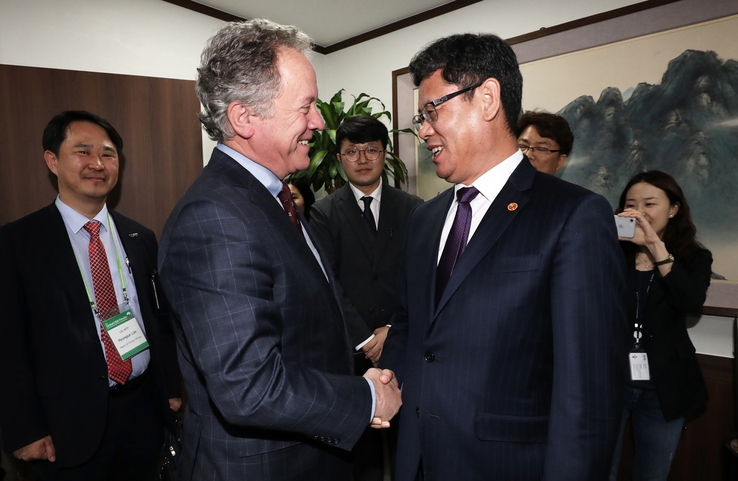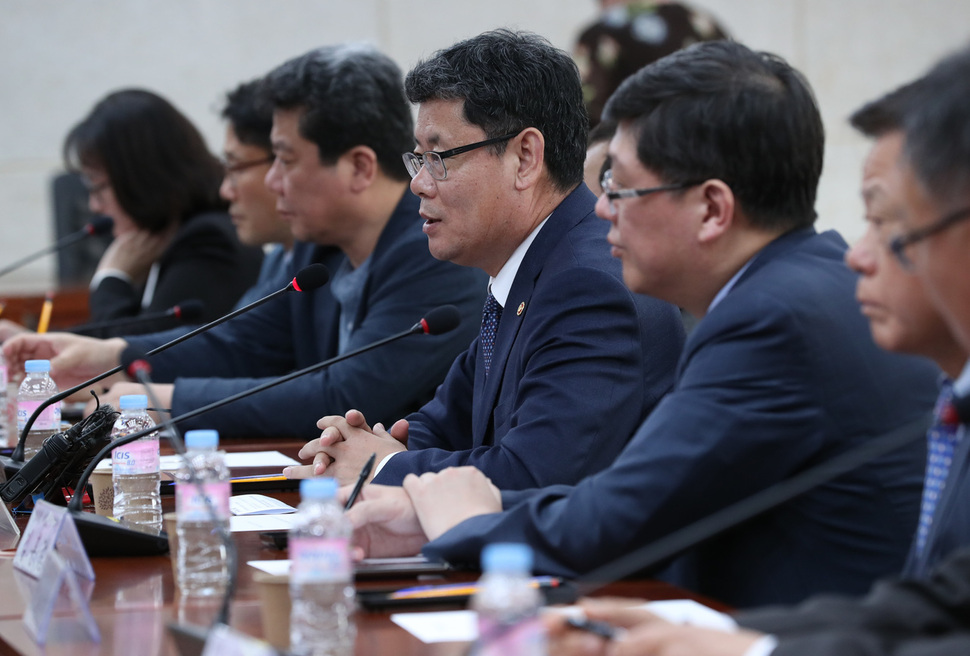 |
|
Unification Minister Kim Yeon-chul meets with David Beasley, executive director of the United Nations World Food Programme, in Seoul on May 13.
|
Negative public opinion following missile launches increases period for canvassing opinions
In recent days, the South Korean government has been soliciting the opinions of various groups in society, including NGOs and religious organizations, with the hope of moving forward with humanitarian food aid for North Korea. The government will reportedly make its decision about its plan of action after spending the next few weeks listening to a wide range of opinions from civic society about the need for humanitarian aid to North Korea, as well as the timing, method, categories, and amount of that aid. “The World Food Programme report stated that the period when aid is needed is from May to September. But given the need for a public consensus and support, we will continue to canvass public opinion,” an official from the Unification Ministry said on May 15. After meeting with representatives from NGOs and religious groups on May 14, Unification Minister Kim Yeon-chul held another meeting on Wednesday morning with policy advisors on the Unification Ministry’s humanitarian cooperation subcommittee. By next week, he plans to meet with ministers from several large churches to hear their opinions about food aid to the North. The NGOs and religious groups represented in the meeting have considerable experience with providing humanitarian aid to the North. The reason that the government has lengthened the opinion-canvassing period – originally scheduled to last one week – for a week or two more is reportedly because of the “unexpected variable” of North Korea’s test launch of a short-range missile on May 9. Amid increasing negative public opinion about humanitarian aid, the government concluded that additional opinion canvassing would be necessary. This has also aggravated the government’s dilemma about the method of providing humanitarian aid to North Korea. Generally speaking, three methods are available: the government can provide aid directly to the North, it can provide aid through international bodies, or it can fund NGOs. The government could use all three methods at the same time, or it could shift its focus from direct aid to aid via international organizations according to shifting trends in public opinion. The method of direct aid by the government has the advantage of being faster and simpler. According to South Korean government officials, it typically takes a month or two for food aid to actually reach its targets after the South Korean authorities deliver it to the North. In this process, the Unification Ministry would lead deliberations with other relevant ministries, solicit public opinion, explain the plan to the National Assembly, and secure the approval of the Inter-Korean Exchange and Cooperation Promotion Council. Once the methods of acquiring and transporting the food were determined, the supplies could be delivered by land or by sea.
 |
|
South Korean Unification Minister Kim Yeon-chul (fourth from left) meets with representatives from the Korean Council for Reconciliation and Cooperation (KCRC), the Korean NGO Council for Cooperation with North Korea’s (KNCCK), and the Korean Conference of Religion and Peace regarding efforts to send humanitarian aid to North Korea in Seoul on May 14. (Kim Jung-hyo, staff photographer)
|







